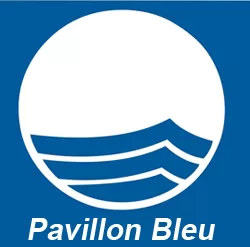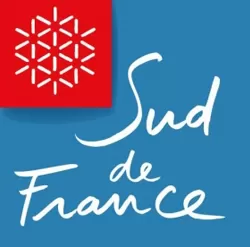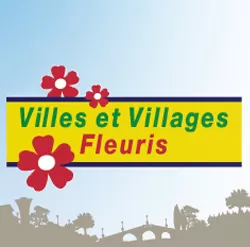Built in 1930 in Copenhagen, this black liner called "Moonta" was to have an extraordinary destiny! A cruise ship in Australia's Spencer Gulf until 1955, when it was bought by a Greek company based in Piraeus. Repainted white and renamed "LYDIA", she operated the regular service between Marseille and Beirut until 1966...
Only 100 m from a sandy beach
Le Barcarès - A 1st-rate seaside resort
Nestled between the Etang de Salses, an exceptional 7,000-hectare natural site, and the Mediterranean, Le Barcarès occupies a highly original position.
A seaside resort, port and party town, Le Barcarès has many faces, all linked by the same dynamic.
The markets
Lively and colourful, the markets are the perfect place to discover the region's best products. A typical Catalan souvenir to offer? A simple stroll around the region's exhibitors and producers will delight your eyes and taste buds. Fruits and vegetables, fresh fish, handicrafts, and local specialities are sure to tempt you...
The Allée des Arts
The Allée des Arts, an astonishing hub and a titanic undertaking, was added to the liner in 1969 thanks to the famous British photographer and gallery owner John Craven, and is one of the distinctive features of Barcarés' identity. This Musée des Sables, with its renowned artists, is still "the longest open-air museum in the world".
The Fishermen's Village
Today, the Fishermen's Village bears witness to the desire to preserve its roots and preserve the immemorial knowledge of the know-how that continues to live on through a few native Barcarésians. Until the 1950s, a large group of "barracks" occupied the eastern shore of Grau Saint Ange. This communication route between the lagoon and the sea enabled fishermen, seasonal at first, to settle permanently on our shores. Port-Barcarès grew from strength to strength, and the arrival of the "mata burro", the railway that "killed donkeys...", enabled this small port to become one of the leading seaside resorts on the coast.
Cycling tours
The sea, miles of beaches and wilderness await you along the various cycle paths. Port Barcarès offers a cycle path linking the different districts of the resort. Fully signposted and 10km long, it will help you discover the charms of the resort. The Barcarès cycle path joins the Agly greenway, adding a further 14km of asphalt surfacing, stabilized and secured, offering you the most beautiful views of Mont Canigou and the orchards leading to Rivesaltes.
The beach
8 kilometers of sandy beach to discover and over 300 days of sunshine a year... It's in this enchanting setting that your vacation begins, facing the Mediterranean Sea. Idleness, relaxation, swimming, sports activities... All the assets of the Catalan coastline for an unforgettable vacation.
Le Port
A warm welcome and a wide range of services guarantee a pleasant and safe stay. A real place of conviviality, the port combines traditional fishing and yachting. Thanks to its position between the Mediterranean Sea and the Etang de Salses, "Le Grau St Ange" is the ideal location for the creation of a seaport and marina. You can still see the trawlers loaded with fish, which are sold at the auction, or walk along the mooring channels to contemplate the sailboats, which attract onlookers, curious about their beauty.
The pine forest
The Lido pine forest, nestling between the marine lake and the Mediterranean, invites young and old to enjoy a breath of fresh air. An ideal place for sports, it is also an area in need of protection.
Owned by the Conservatoire du Littoral since 1980, this pine forest is a protected heritage site that is home to a wealth of ecological resources. It is made up of 3 very distinct landscapes. Planted by man around 60 years ago, it is mainly populated by maritime and pinion pines. Also ideal for walks with your dog.
The House of Arts
La Maison Honta - 1860
The Maison Honta, named after its former owner, was one of the first "permanent" houses in Le Barcarès, grouped around the church, which was built in 1866. We can therefore assume that this building dates from the 2nd half of the 19th century, especially as it appears in all the photos we have.
Originally, it was one of the first hotels in Le Barcarès, "le Bar-Hôtel Planet", until the end of the 1920s. Purchased shortly before 1930 by Mr and Mrs Henri Honta (he was from Tarbes, she was from Alsace), it became a grocery shop, "L'Abeille d'Or".
The rooms above were always rented out in summer, mainly to people from Rivesalt and other residents of the Agly valley. The Honta family then converted the first floor into flats for rent. They live on the ground floor. Henri Honta was one of the first deputy mayors of the commune, which was created in 1929.
The commune bought the house from Marie-Claude Marty, Henri Honta's granddaughter (who was born there). The old building, in poor condition, was demolished to make way for the Maison des Arts, completed in 2009.
The Etang
With a surface area of 5,400 ha, our lake is the second largest lagoon in Languedoc-Roussillon. Connected to the sea by 3 artificial graus, with an average depth of 2 m, the etang is, as a result, little or not affected by the phenomena of filling up or asphyxiation of the water that other etangs experience. However, this proximity to the lagoon means that we sometimes have to deal with natural phenomena such as "malaïgue", a problem already well known to our ancestors.
Activities nearby
DEFERLANTES Festival Barcarès
Every year, the famous Les DEFERLANTES takes place in Le Barcares, the magnificent port town in the south-west of France, in the Pyrénnées Orientales. One of the most popular events in Le Barcarès is Les DEFERLANTES.
Collioure 39 minutes away
Situated in the far south of France, in the Pyrénées-Orientales department, the village of Collioure nestles in a bay where the clear waters of the Mediterranean Sea meet the rocks of the Pyrenees mountain range. There are several sandy or pebble beaches and bays where you can enjoy a swim.
A Town of Art and Historic City since Antiquity, Collioure invites you to discover its history and exceptional architectural heritage.
Collioure has always been a source of inspiration for artists. Picasso, Matisse, Derain, Dufy, Chagall, Marquet and many others have immortalised the small Catalan port. Today, the Museum of Modern Art, some forty galleries and artists from a wide range of backgrounds continue to make Collioure "the City of Painters".
The Castillet 24 minutes away
The Castillet, the emblem of the city of Perpignan, is the former main gate of Perpignan's city walls. The main body of the building, the grand Castillet, built of brick and Baixas marble, dates back to the Aragonese period. It was built from 1368 and transformed under Louis XI, who added its current terrace and brick turret crowned with a cupola. The second gate, the Porte Notre-Dame, was built at the same time. In the 17th and 18th centuries, the building was converted into a prison. It now houses the Casa Pairal museum of local history and ethnography. 142 steps must be climbed to reach the top of the monument.
The Sigean reserve 33 minutes away
Situated between Narbonne and Perpignan, the Réserve Africaine de Sigean is home to more than 3,800 animals over more than 300 hectares.
In the 1970s, 15 km from the south of Narbonne, on the edge of the Bages-Sigean lakes, at the mouth of the river Berre and around an area of former salt pans converted into a vast etang called l'Œil de Ca, areas of garrigue, occasionally interspersed with vines, represented a natural, non-urbanised area, rich in flora and fauna, which needed to be preserved.
It was with this in mind that the Languedoc-Roussillon interministerial mission, known as the racine mission after its chairman, which was responsible for coastal development, gave the go-ahead in 1972 for the creation of an animal park that was unique in terms of its size, original in terms of its extensive breeding protocols, well integrated into the natural environment and capable of contributing to its protection while developing a conservation activity for mainly African animal species.
Created on the initiative of Paul de La Panouse and Daniel de Monfreid, the Réserve Africaine de Sigean opened to the public on 8 April 1974.
Tautavel Prehistory Museum 35 minutes away
This is a museum built around the Tautavel Man. It presents the entire history of mankind in Europe, from the first Europeans to the dawn of history.
In 1971, the discovery of the Tautavel Man (450,000 years old) by Professor de Lumley's teams sparked the desire to create a scientific and cultural centre.
This bold gamble triggered a huge expansion of the town and gave it an unprecedented reputation and appeal. At the age of twenty, the Tautavel man was 1.60 m. He was a homo Heidelbergensis with all the characteristics of the first Europeans: a receding forehead, a bulge above the eye sockets, prominent cheekbones and a protruding jaw.
They had not yet mastered fire, but were excellent hunters. It is thought that he chose the site of the Caune de l'Arago for its privileged position: they could dominate the valley, their water source and therefore their prey.
The city of Carcassonne 1h15 away
The jewel in the crown of the region, the medieval Cité de Carcassonne, a UNESCO World Heritage site, opens its doors to you for a breathtaking journey through 2,500 years of history.
Walk in the footsteps of the Romans, Visigoths, Saracens and Franks!
Take a free trip into the bowels of this mysterious city, surrounded by two defensive walls and topped by fifty-two towers.
Stroll through its narrow streets, discover its museums, its castle Comtal, take a special tour of the ramparts...
in a horse-drawn carriage, or by little train...




